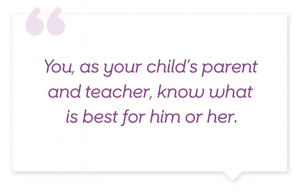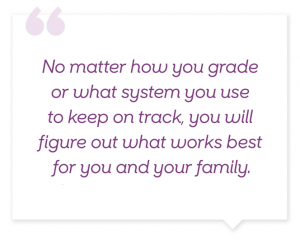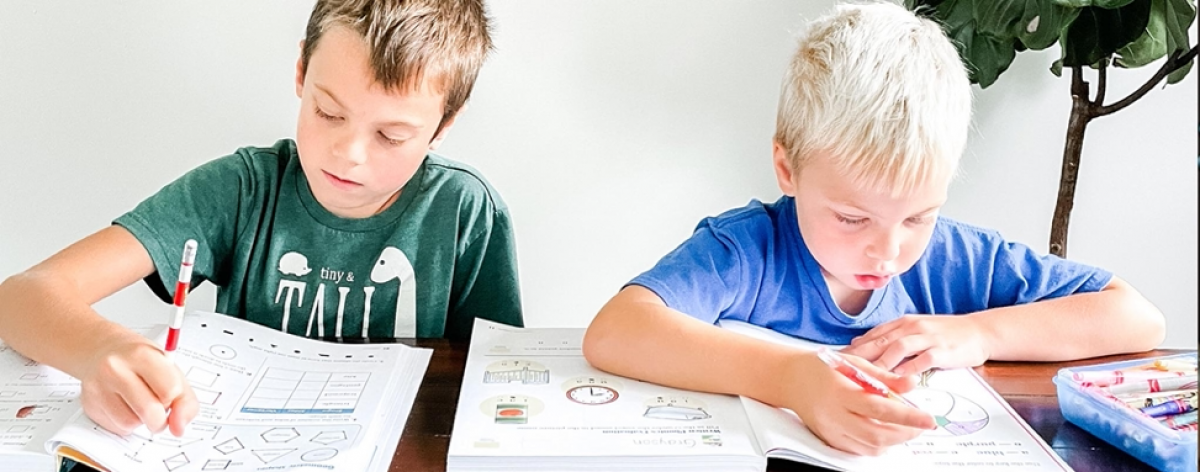Grading can be overwhelming when you have multiple children to teach, but if you can figure out the best way — one that works for you and your kids — it doesn’t have to be daunting! In my experience, organization and a grading schedule are very helpful.
Over the years, we have used Abeka’s parent-led curriculum and Abeka Academy. I have graded countless tests, quizzes, and daily work, and would like to share a few tips I discovered to make grading easier.
When I first began homeschooling, I taught kindergarten, second grade, and sixth grade, all with Abeka’s parent-led curriculum. I used Abeka’s progress report grading sheets. Additionally, the teaching materials contained the grading scale, which was easy to follow. These were both so helpful!
For organization, I had a binder with the grading sheets inside for each child, and I kept those binders on my homeschool shelf for easy access. During the first few months of homeschooling, I graded and recorded my children’s work in the evening. Personally, I found this to be inconvenient for me. After teaching during the day, I wanted to hang up my teacher hat for the night. At that point, I decided to try grading during the day, and I found it much easier to grade as we worked throughout the day. If my children took a test or evaluation, I would grade and record it immediately. I found this beneficial to their progress because we could immediately go over their work and review any questions they had gotten incorrect. I found this approach made grading less stressful and overwhelming, and that it prevented me from falling behind.
Depending on your child, you may or may not want him or her to see an evaluation. For example, I have a couple of children who get discouraged easily, and I found that letting them see their grades was not to their benefit. I noticed these children would dwell on any incorrect answers and find it challenging to focus or move on. So for these children, I learned simply to review the answers they got wrong, without showing them their grades. On the other hand, I also have children who really thrive and learn from knowing their grades, so for those, I would grade with them present. You, as your child’s parent and teacher, know what is best for him or her.

In our second year of homeschooling, I made the decision to use Abeka Academy for my oldest child. The video manuals were helpful in tracking grades since they came with progress report sheets. Since my son worked more independently, I would grade his work once a week. Typically, this was on a Friday afternoon when I finished teaching my other kids. It was a great way for us to go over his work together and check his progress. While my son was doing Abeka Academy, I left all of his progress reports in his video manuals. When the year was over, I would organize them into his homeschool binder. When my next child started with Abeka Academy, it was important for me to grade daily because that child, in particular, needed more guidance and supervision.
Keeping the children’s grades in binders was a great way to organize and keep track of their grades. However, one year, our basement flooded, and we lost a lot of keepsakes to the floodwater. This made us realize that we could lose our kids’ grades and records in any disaster. Since then, every year, we scan their progress reports into files on our computer and upload them to cloud storage.
When it comes to grading and evaluation, don’t be discouraged! No matter how you grade or what system you use to keep on track, you will figure out what works best for you and your family.





Comments for Grading Tips | Guest Blogger Rachel Dunham
Add A Comment
Your email address will not be published. Required fields are marked *